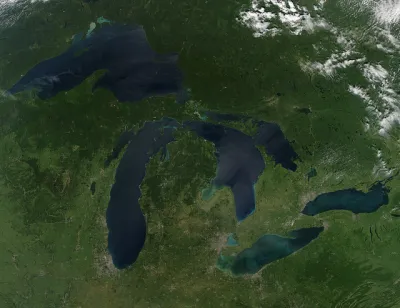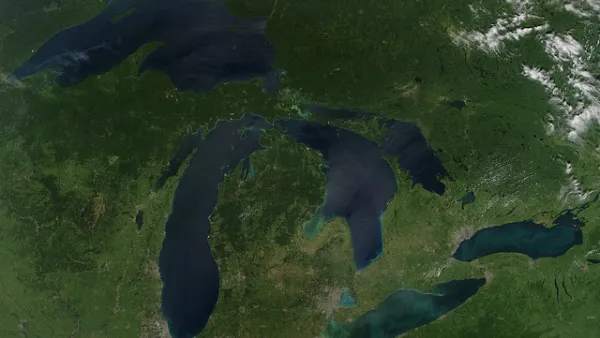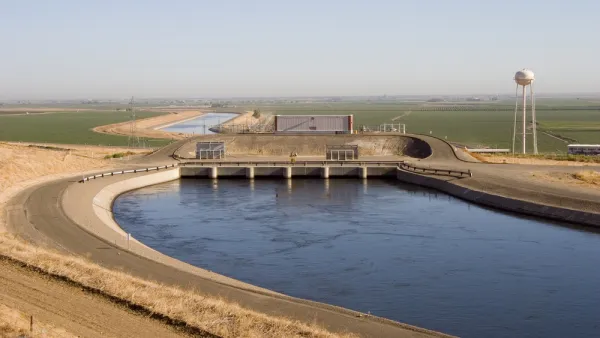The city of Waukesha asked for more water than the Great Lakes Compact would allow. Commenters remind the city of Waukesha that water for growth was never the goal of the Great Lakes Compact.

Don Behm of the Milwaukee-Wisconsin Journal Sentinel provides the big news about a decision by Great Lakes officials to cut a water diversion request intended to help the city of Waukesha, a suburb of Milwaukee, continue to grow. According to Behm, Waukesha's proposal requested an average of 10.1 million gallons a day. Great Lakes official trimmed that proposal to 8.2 million gallons a day by removing "portions of three neighboring communities from a future water service area to receive lake water," according to Behm.
An article by Angie Schmitt offers helpful perspective on the context and larger implications of the decision. "Governors of the states surrounding the Great Lakes are considering a water policy case with big implications for land development throughout the Midwest," writes Schmitt, who also provides this background:
Waukesha, Wisconsin, a sprawling suburban area outside Milwaukee, has exhausted its water resources. Rather than cooperate with the city of Milwaukee to secure water, Waukesha spent years preparing an application to divert water from Lake Michigan. Waukesha needs permission from the states and provinces that signed the Great Lakes Compact, a 2008 agreement to protect the world’s largest freshwater source from being pillaged.
In addition to providing that concise description of the issue, Schmitt's article shares the commentary provided by James Rowen of the Political Environment, who has been following the request since it was first proposed. According to Rowen, a recent decision by Great Lakes officials to cut the water diversion request should have been anticipated years ago.
Prior to the regional group's decision, the Wisconsin Department of Natural resources had approved the proposed change of service area.
FULL STORY: Great Lakes officials trim Waukesha's water request

National Parks Layoffs Will Cause Communities to Lose Billions
Thousands of essential park workers were laid off this week, just before the busy spring break season.

Retro-silient?: America’s First “Eco-burb,” The Woodlands Turns 50
A master-planned community north of Houston offers lessons on green infrastructure and resilient design, but falls short of its founder’s lofty affordability and walkability goals.

Delivering for America Plan Will Downgrade Mail Service in at Least 49.5 Percent of Zip Codes
Republican and Democrat lawmakers criticize the plan for its disproportionate negative impact on rural communities.

Test News Post 1
This is a summary

Test News Headline 46
Test for the image on the front page.

Balancing Bombs and Butterflies: How the National Guard Protects a Rare Species
The National Guard at Fort Indiantown Gap uses GIS technology and land management strategies to balance military training with conservation efforts, ensuring the survival of the rare eastern regal fritillary butterfly.
Urban Design for Planners 1: Software Tools
This six-course series explores essential urban design concepts using open source software and equips planners with the tools they need to participate fully in the urban design process.
Planning for Universal Design
Learn the tools for implementing Universal Design in planning regulations.
EMC Planning Group, Inc.
Planetizen
Planetizen
Mpact (formerly Rail~Volution)
Great Falls Development Authority, Inc.
HUDs Office of Policy Development and Research
NYU Wagner Graduate School of Public Service




























